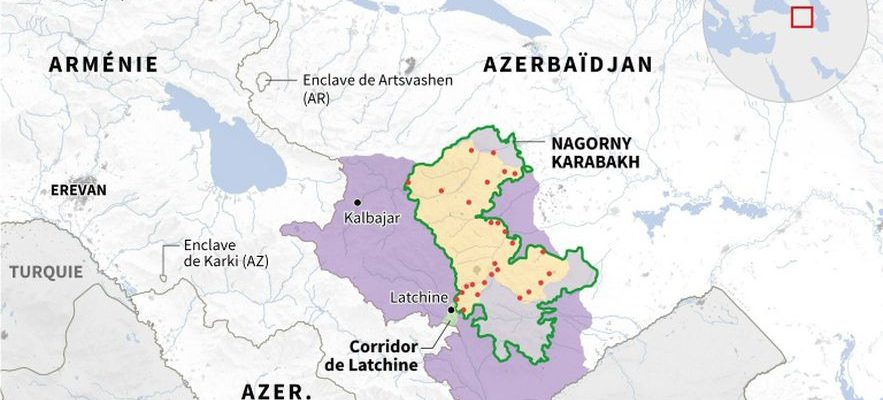Following a lightning offensive by Azerbaijan in Nagorno-Karabakh and after Russian mediation, Baku and the Armenian separatists concluded a ceasefire this Wednesday in which Armenia did not participate, however. Negotiations will be held this Thursday in the Azerbaijani city of Yevlakh.
The casus belli between Armenia and Azerbaijan in this matter dates back to 1921. The Communist Party of the Soviet Union then decided to attach this region predominantly populated by Armenians to the Soviet Republic of Azerbaijan. However, it obtained autonomous status in 1923.
A veritable powder keg, Nagorno-Karabakh, considered a central region of its history by Armenia, has experienced several armed conflicts, the first having taken place in 1988. As the Soviet Union begins to disintegrate, Gorbachev refuses to unify the mountainous territory in Yerevan despite numerous demonstrations in Stepanakert, the de facto capital of the enclave.
Nagorno Karabakh, a disputed region for three decades
© / afp.com/Valentin RAKOVSKY, Sophie RAMIS
Then followed a conflict between the separatists, supported by the Socialist Republic of Armenia, and Azerbaijan, which lasted six years and caused the deaths of tens of thousands of people.
The latest clashes date back to 2020 and led to a fragile ceasefire, after causing the death of 6,500 people in less than two months. Tensions reappeared in December 2022 with the organization of an Azeri blockade on the Lachin corridor, which connects the enclave to Armenia, leading to a humanitarian tragedy by starving the population.
Previously supported by Moscow, the separatists this time seem to have been alone in the face of Baku’s offensive. Russia was content with a single call for calm and a return to the status quo of the agreements negotiated in 2020.
